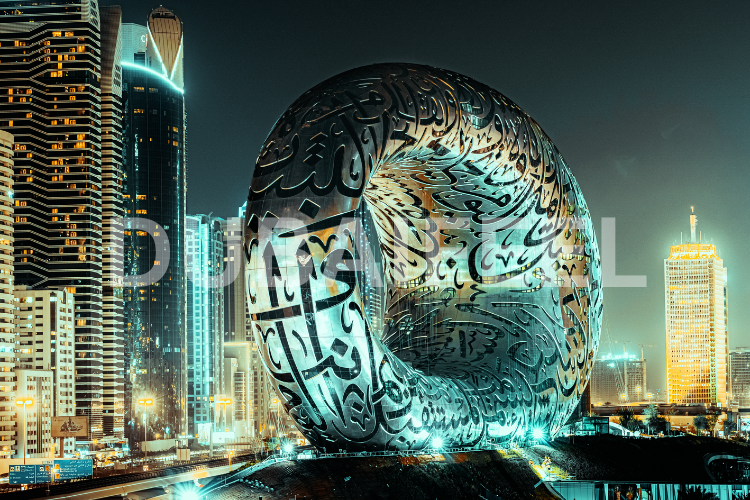Dubai, renowned for its towering skyscrapers and luxurious lifestyle, also boasts a rich historical tapestry often overshadowed by its modern attractions. However, the city’s exclusive sites offer a fascinating glimpse into its past, revealing trade, culture, and heritage stories. If you’re eager to explore Dubai beyond its contemporary image, here’s a guide to visiting eight of its most significant sites.
1. Al Fahidi Historical Neighborhood
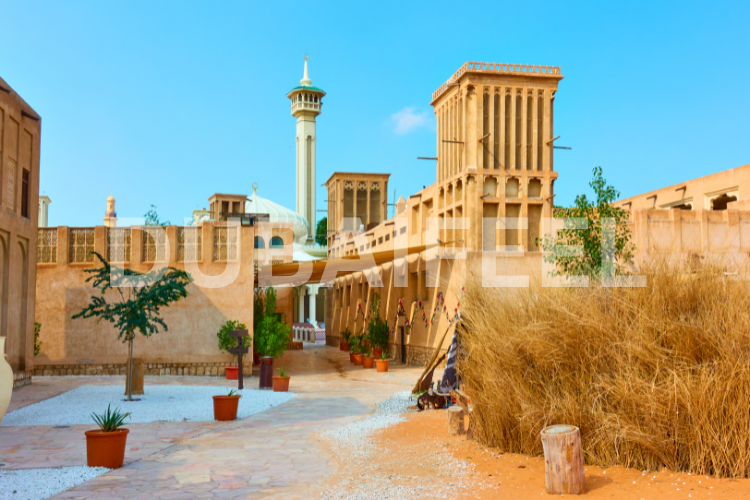
Nestled along Dubai Creek, Al Fahidi Historical Neighborhood (Al Bastakiya) is a well-preserved area that reflects Dubai’s past as a bustling trading port. The narrow lanes, wind-tower architecture, and traditional houses glimpse the city’s pre-oil era. Start at the Dubai Museum in the Al Fahidi Fort, which provides an insightful introduction to Dubai’s history.
Wander through the labyrinth of streets and visit the Centre for Cultural Understanding for a more profound cultural experience. Nestled along Dubai Creek, also known as Al Bastakiya, offers an extraordinary glimpse into the rich historical tapestry of Dubai. This well-preserved area is one of the few remaining examples of traditional Emirati architecture, reflecting the city’s essence before the era of rapid modernization.
As you stroll through its narrow lanes and explore its buildings, you embark on a journey through Dubai’s past. The Al Fahidi Historical Neighborhood is a living museum showcasing the historical lifestyle of Dubai’s early inhabitants. The neighborhood is famous for its wind-tower architecture, a hallmark of traditional Arabian design. These wind towers, or barrels, were ingeniously crafted to catch the breeze and cool the interiors of the houses in a time before air conditioning.
This architectural feature is a testament to the historical ingenuity of Dubai’s early builders and their adaptation to the harsh desert climate. The significance of Al Fahidi extends beyond its architecture. This area was once a bustling hub of trade and commerce, reflecting Dubai’s pivotal role in regional trade routes. Traders from Persia and India would come to this neighborhood, contributing to its importance as a center of economic activity.
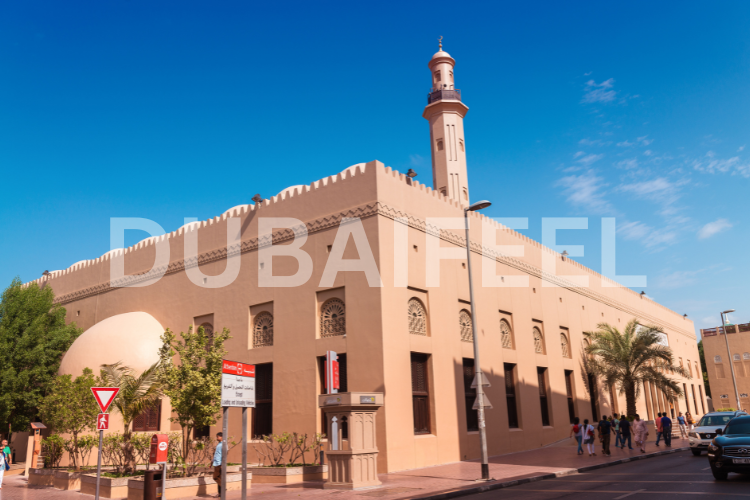
Walking through Al Fahidi today, you can almost hear the echoes of trade and interactions that shaped the city’s growth. In addition to its historical buildings, Al Fahidi Historical Neighborhood is home to various cultural institutions that offer insights into Dubai’s past. This museum, which is present in the Al Fahidi Fort, is a prime example.
This museum provides a comprehensive overview of Dubai’s history, featuring historical artifacts, dioramas, and interactive exhibits. It is an essential stop for anyone looking to understand the historical context of the neighborhood and the city. Another notable institution within Al Fahidi is the Sheikh Mohammed Centre for Cultural Understanding (SMCCU). This center plays a crucial role in preserving and promoting Dubai’s cultural heritage.
Through guided tours and cultural programs, SMCCU educates visitors about historical customs, traditions, and the historical evolution of Emirati society. Engaging with the center’s programs offers a deeper appreciation of the lifestyle and values that shaped modern Dubai. Efforts to preserve the Al Fahidi Historical Neighborhood reflect a commitment to maintaining Dubai’s identity amid rapid urban development. The Dubai Municipality has undertaken extensive restoration projects to preserve historical architecture.
Also read:5 Must-Do Eco-Friendly Activities in Dubai: What You’ll Love and What You Might Miss
These preservation efforts are crucial for retaining Al Fahidi’s historical charm and providing future generations with a tangible connection to Dubai’s past. Exploring Al Fahidi, you’ll encounter various traditional art galleries, museums, and cafes that enrich the historical experience. The narrow, winding streets are lined with historical houses converted into cultural spaces, allowing visitors to experience the historical ambiance in a modern context. Al Fahidi Historical Neighborhood is a testament to Dubai’s rich history and cultural heritage.
By immersing yourself in the historical atmosphere of this neighborhood, you gain a profound understanding of Dubai’s journey from a modest trading port to a global metropolis. The historic architecture, cultural institutions, and preservation efforts make Al Fahidi a must-visit destination for anyone interested in exploring Dubai’s historical roots.
2. Dubai Museum: A Gateway to the City’s Historical Heritage
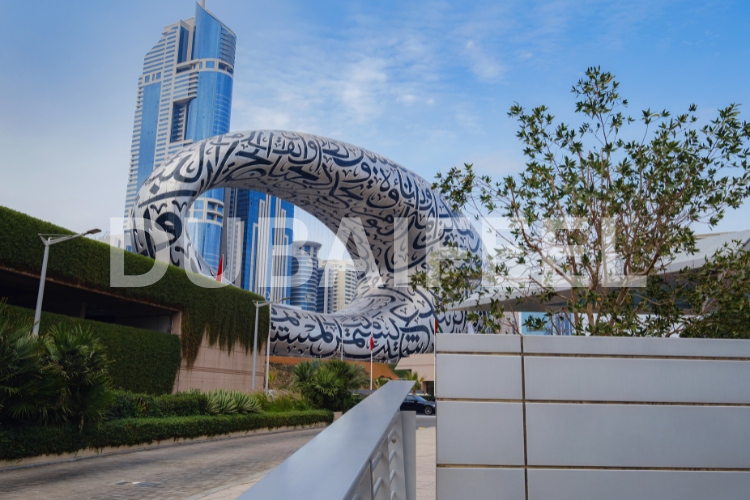
Housed in the Al Fahidi Fort, the Dubai Museum showcases the emirate’s transformation from a modest fishing village to a global metropolis. The museum’s exhibits include traditional artifacts, dioramas, and historical documents. It is easily accessible by foot from the other historical sites. Allocate about an hour for a comprehensive visit.
The Dubai Museum is a crucial landmark for anyone seeking to understand the city’s rich historical past. Housed in the Al Fahidi Fort, which dates back to 1787, the museum provides an immersive experience of Dubai’s transformation from a modest fishing village to a global metropolis.
The Dubai Museum itself is an artifact of historical significance. The Al Fahidi Fort, originally constructed to defend the city against invaders, now serves as a backdrop for the museum’s exhibits. Its thick coral-stone walls and traditional wind towers offer a tangible connection to Dubai’s past, setting the stage for a deeper exploration of the city’s historical evolution.
Inside the museum, visitors encounter a wide array of exhibits that vividly illustrate the historical lifestyle of Dubai’s early inhabitants.
The museum’s collection includes historical artifacts such as traditional fishing nets, pearl diving equipment, and ancient weaponry. These items provide a fascinating glimpse into daily life and economic activities central to Dubai’s development. One of the museum’s highlights is its dioramas, which recreate historical scenes from Dubai’s past. These detailed displays offer visitors an engaging way to experience settings, including traditional souks (markets), desert life, and the bustling port of Dubai Creek.
The dioramas mainly reflect accuracy, making them a valuable educational tool for understanding the city’s heritage. The museum also features interactive exhibits that enhance the historical experience. Visitors can explore trade routes, learn about traditional Emirati customs, and view reconstructions of buildings. These interactive elements mainly engage visitors of all ages, making the past journey educational and entertaining.
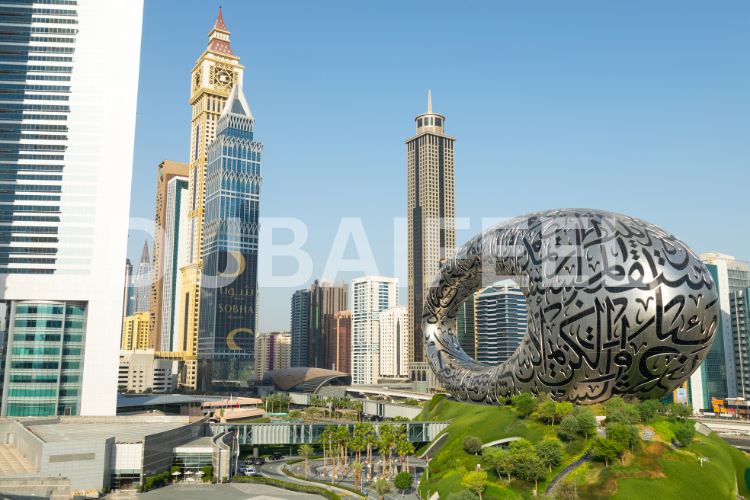
Beyond its physical exhibits, the Dubai Museum provides valuable cultural and historical insights through multimedia presentations and guided tours. The museum’s audio-visual displays offer historical context and narratives, helping visitors appreciate the significance of the artifacts and scenes on display. Knowledgeable staff conduct the guided tours, providing in-depth explanations that enrich the visitor experience.
The Dubai Museum plays a vital role in preserving Dubai’s historical heritage. By showcasing historical artifacts and promoting awareness of the city’s past, the museum contributes to conserving cultural traditions and knowledge. The museum’s efforts to preserve and present historical elements ensure that Dubai’s rich history remains accessible to residents and visitors. The museum’s educational programs mainly deepen visitors’ understanding of Dubai’s historical and cultural heritage.
Workshops, lectures, and school programs offer additional opportunities for learning about historical practices and events. These educational initiatives are essential for fostering a greater appreciation of Dubai’s historical journey among younger generations. The Dubai Museum is a gateway to the city’s heritage, offering an immersive experience revealing Dubai’s rich tapestry. Through its setting, diverse exhibits, and educational programs, the museum provides a comprehensive view of Dubai’s transformation from a historical trading port to a modern metropolis.
Whether you are a history enthusiast or a casual visitor, the Dubai Museum offers a valuable chance to join the historical roots of this dynamic city.
3. Dubai Creek: A Historical and Cultural Jewel of Dubai
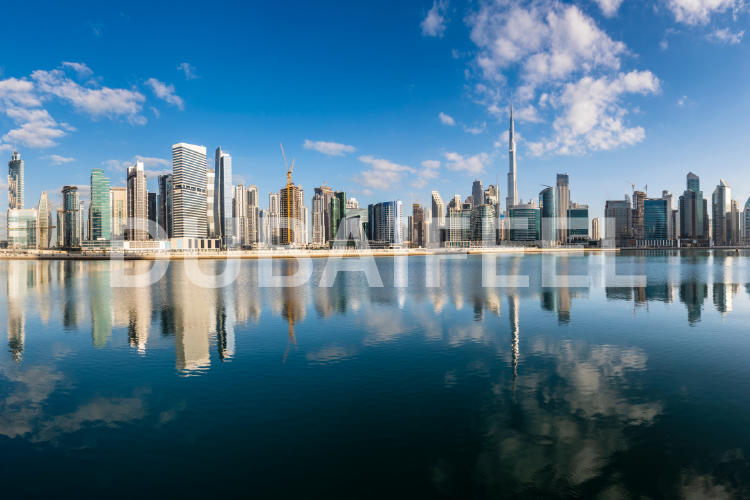
Dubai Creek is a natural saltwater creek central to Dubai’s history. It is a major trade route and the heart of the city’s old district. The area around the creek offers a blend of traditional and modern attractions. Experience the creek as traders did centuries ago by bringing a classic abra (water taxi) ride.
Stroll along Creekside Park or visit the Gold and Spice Souks to taste old Dubai. Dubai Creek stands as one of the most iconic and historical landmarks in Dubai, offering a unique glimpse into the city’s rich heritage. This saltwater creek divides the city into two distinct sections: Deira and Bur Dubai. It is a historical focal point that links the city’s ancient past with its modern present and future. Dubai Creek’s historical significance is profound. For centuries, it was a bustling hub of trade and commerce.
In ancient times, traders across the Arabian Peninsula and beyond gathered at Dubai Creek to exchange textiles, spices, gold, and seafood. This vibrant trade activity transformed Dubai from a modest fishing village into a prosperous trading center. The creek was not just a body of water; it was the lifeblood of the city’s economy, playing a crucial role in its historical development. Today, Dubai Creek is more than just a picturesque waterway; it is a living testament to Dubai’s cultural evolution.
Visitors can experience this rich history through various attractions and activities along the creek. One of the most charming ways to explore Dubai Creek is by taking a traditional abra ride. These wooden water taxis offer a nostalgic journey across the creek, allowing visitors to experience the historical mode of transport that has been a part of Dubai’s heritage for centuries.
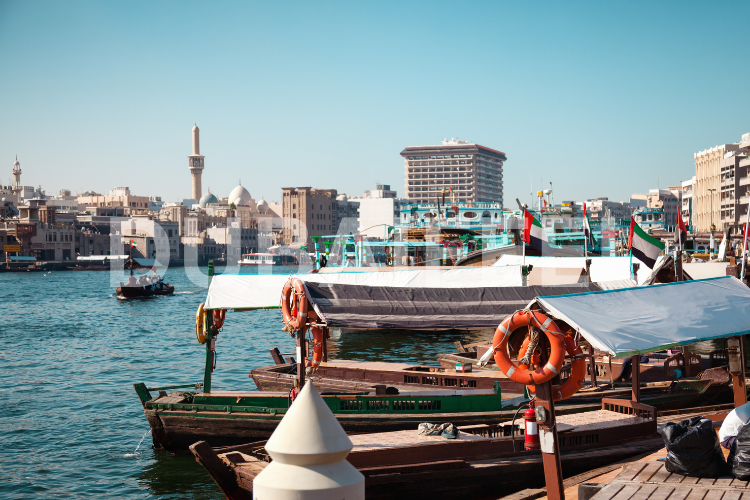
The Al Fahidi Neighborhood, located near Dubai Creek, is another significant historical site. This well-preserved area features narrow lanes, traditional wind towers, and historic houses illuminating Dubai’s past. Walking through this neighborhood contrasts the city’s modern skyline, highlighting the historical essence of Dubai amidst its contemporary developments. The neighborhood is home to museums and cultural centers, including the Dubai Museum, which showcases artifacts and exhibits reflecting the city’s historical journey.
Dubai Creek beautifully blends its historical charm with modernity. The area surrounding the creek features a mix of traditional souks (markets) and contemporary developments. The bustling waterfront has shops, cafes, and restaurants where visitors can relish the vibrant environment while enjoying historic and modern Dubai views. The contrast between the old souks and the sleek, luxurious buildings that now dominate the cityscape underscores the dynamic evolution of Dubai.
Dubai Creek has significantly developed to enhance its appeal as a cultural and tourist destination in recent years. Dubai Creek Harbour, a modern development along the creek, features luxurious waterfront residences, high-end shopping malls, and fine dining establishments. The Dubai Creek Tower, a monumental skyscraper currently under construction, aims to surpass the Burj Khalifa height, symbolizing Dubai’s ambition and growth. This modern project highlights Dubai’s commitment to innovation while preserving the creek’s historical and cultural significance.
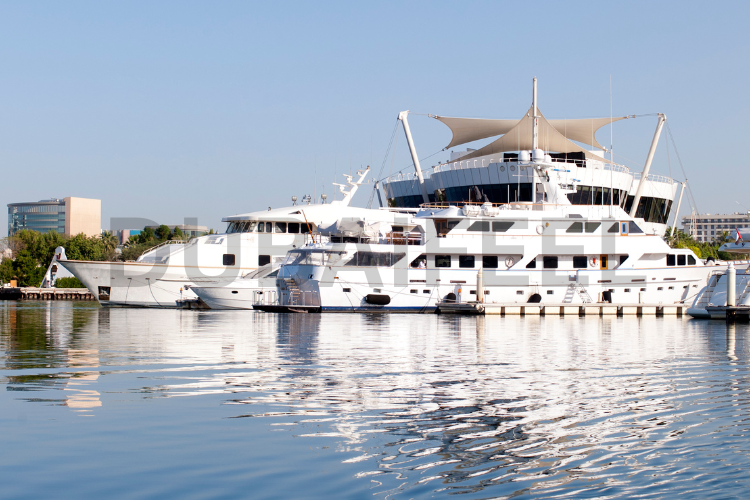
One of the most popular activities on Dubai Creek is the dhow cruise dinner. This traditional wooden boat offers a unique dining experience, combining a delicious buffet with breathtaking views of the city’s illuminated skyline. The dhow cruise allows visitors to enjoy a leisurely journey along the creek, experiencing the contrast between Dubai’s exclusive landmarks and modern developments.
It is an opportunity to savor exquisite cuisine while soaking in the charm of Dubai Creek. Dubai Creek is a cultural gem encapsulating the essence of Dubai’s past, present, and future. Its historical reputation as a trading hub and its role in contemporary urban development make it a must-visit destination. Whether exploring the historic neighborhoods, taking a traditional abra ride, or enjoying a dhow cruise dinner, Dubai Creek offers a multifaceted experience that reflects the city’s rich heritage and dynamic evolution.
4. Jumeirah Mosque
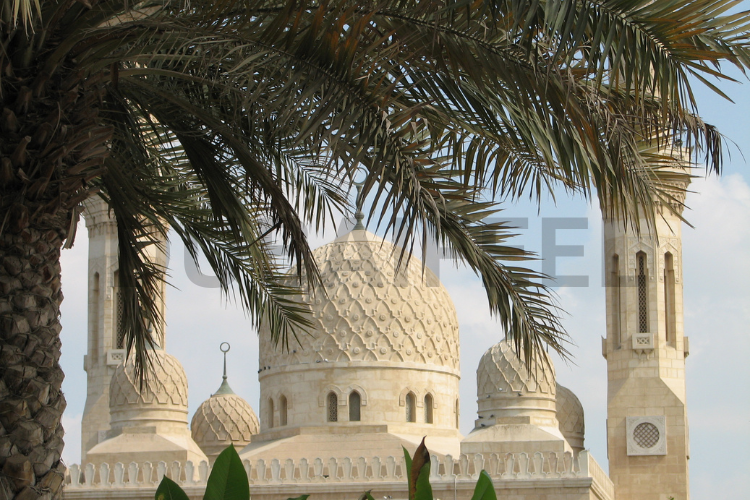
It is a captivating model of Islamic architecture and one of the rare mosques in Dubai open to non-Muslim visitors. Its intricate design and serene ambiance make it a must-visit. Join our guided blog tour to learn about Islamic culture and architecture. The Sheikh Mohammed Centre for Cultural Understanding typically offers tours, including access to the mosque and its grounds. The Jumeirah Mosque is one of Dubai’s most iconic and picturesque landmarks, renowned for its stunning and elegant architecture.
Situated in the Jumeirah area, this mosque is a prime example of modern Islamic architecture, blending traditional design with contemporary beauty. The mosque features a classic Fatimid architectural style characterized by its towering minarets and sizeable central dome. Its intricate stonework and beautifully decorated façade highlight the skill and artistry of its builders.
The mosque’s design is notable for its harmonious proportions and elaborate geometric patterns, reflecting Islamic art’s rich heritage. Jumeirah Mosque is also unique for its openness to non-Muslim visitors.
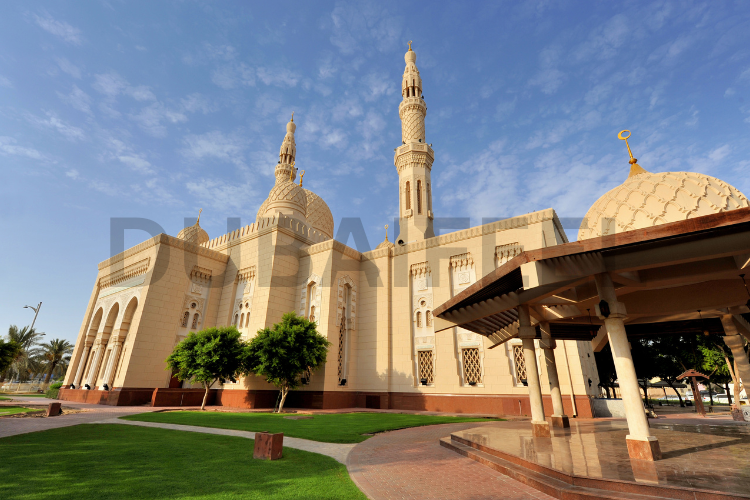
It hosts guided tours aimed at promoting cultural understanding and awareness. These tours, conducted in a respectful and informative setting, offer insights into Islamic traditions and practices, providing a rare opportunity for visitors to learn about the religion and the significance of the mosque. Overall, the Jumeirah Mosque symbolizes Dubai’s commitment to cultural exchange and rich architectural heritage, making it a must-visit for anyone curious to explore the city’s cultural landscape.
5. Sheikh Saeed Al Maktoum House
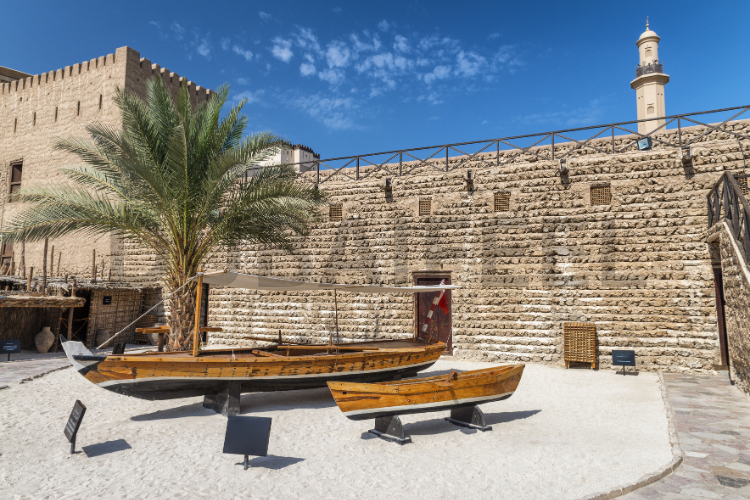
Once the residence of Dubai’s ruling family, Sheikh Saeed Al Maktoum House is a recorded construction turned museum. It offers insights into the life of Dubai’s royal family and the city’s historical development. Located near Dubai Creek, combining a visit with a trip to the nearby Dubai Museum is easy.
The house is open to the public and often features exhibitions on Dubai’s history. The house, with its distinct wind towers and traditional coral stone construction, reflects the architectural style of old Dubai. Now a museum, it showcases historical photographs, artifacts, and exhibits related to Dubai’s heritage, providing visitors with valuable insights into the city’s history and the ruling family’s role in its development.
Also read: 5 Top Educational Museums in Dubai: Uncover the Best and Worst of Learning Experiences
6. Al Shindagha Historical District
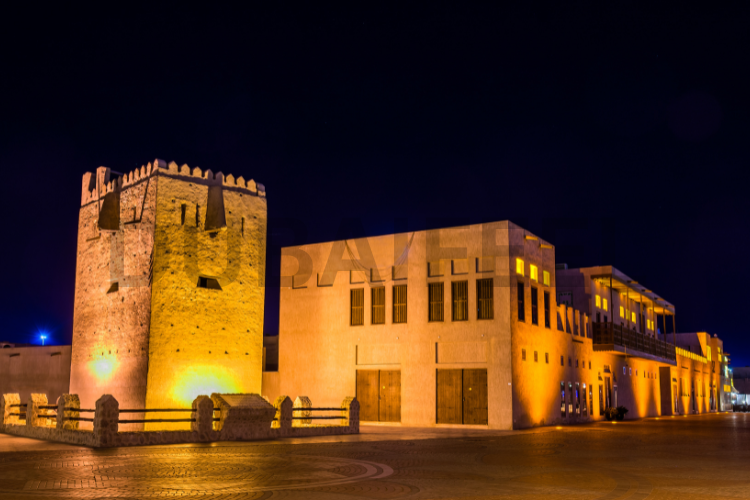
Al Shindagha is another key historic district near Dubai Creek. It houses several heritage buildings, including the Dubai Customs House and the Sheikh Saeed Al Maktoum House. Explore the district on foot or via a guided tour. The area has several traditional markets and museums that showcase Dubai’s maritime and trading history.
7. Hatta Heritage Village
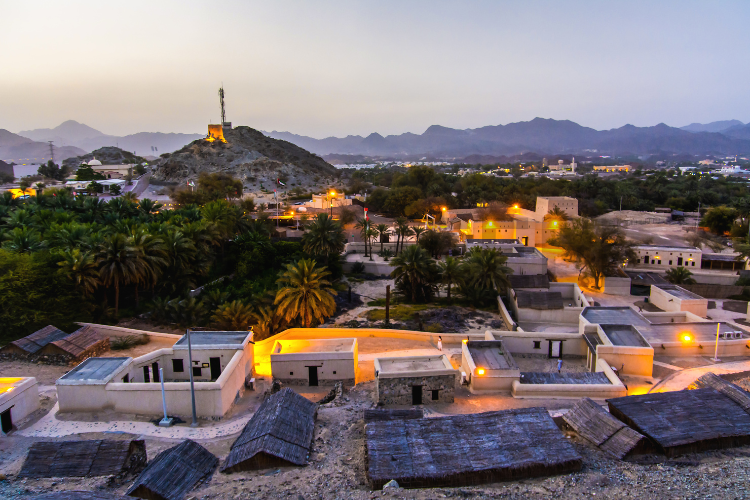
In the Hatta region, Hatta Heritage Village is a well-preserved mountain village that offers a peek into traditional Emirati life. It features restored houses, watchtowers, and a traditional mosque. Located about an hour’s drive from Dubai, you should visit Hatta Heritage Village as part of a day trip to the Hatta area. Guided tours enhance the experience. It offers a captivating glimpse into the traditional life of the UAE.
Its meticulously preserved village showcases the region’s historical architecture and lifestyle. Visitors can explore restored buildings, including conventional mud-brick houses, a mosque, and a watchtower, all reflecting past generations’ architectural styles and materials. The village provides insight into the daily life of its former inhabitants through various exhibits and artifacts, such as traditional tools, pottery, and weaving materials.
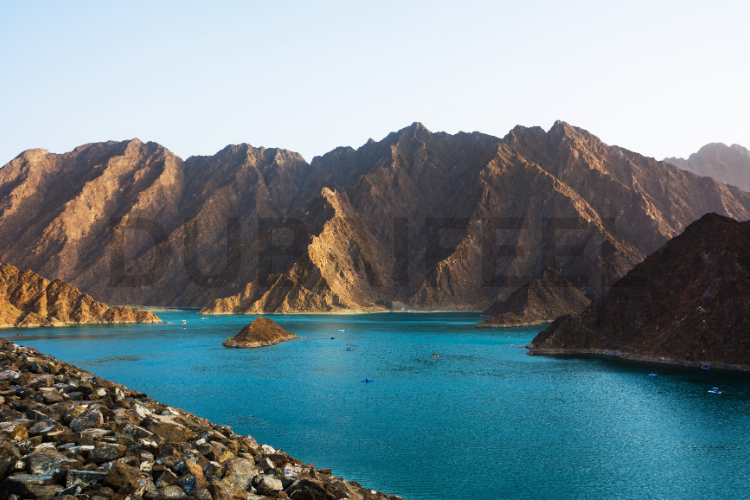
The surrounding landscape enhances the experience, with its rugged mountains and lush date palms starkly contrasting Dubai’s urban environment. Hatta Heritage Village is a living museum that highlights the UAE’s rich cultural heritage and offers a calm out from the bustling city life. Its preservation of elements and authentic representation of traditional Emirati life make it a must-visit goal for those curious about the region’s history and culture.
8. Dubai’s Traditional Souks
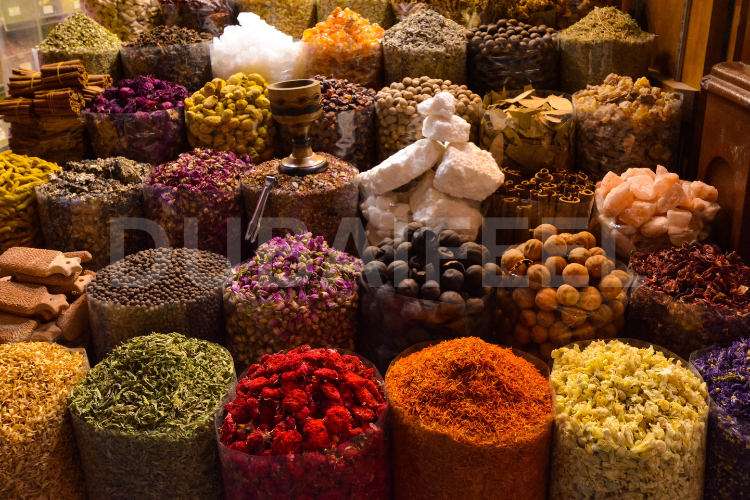
The Gold, Spice, and Textile Souks are traditional markets integral to Dubai’s trade history. These souks offer a sensory overload of sights, sounds, and scents. The souks are located in the Deira district and are readily available by public transport or taxi. Browse the stalls and bargain for unique souvenirs.
Exploring Dubai’s exclusive sites provides a rich contrast to the city’s modern image. These locations offer a window into the city’s fascinating past, from ancient neighborhoods to bustling markets. Whether you’re a history buff or simply curious about Dubai’s heritage, these sites promise an enlightening journey through time.
Also read: Top 10 Outdoor Dining Spots in Dubai: The Best and Worst
